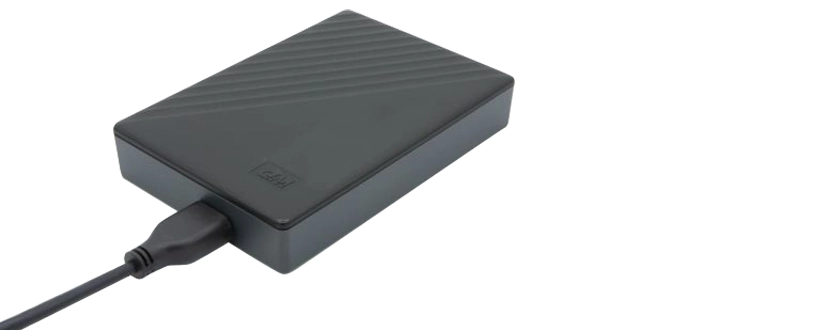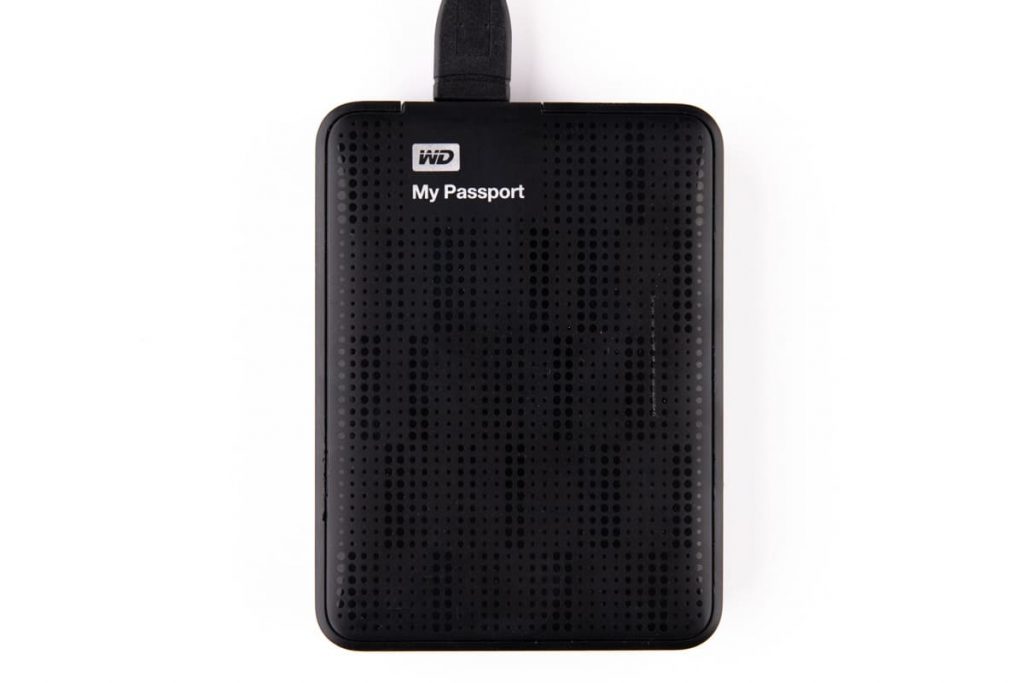In the last few years, external hard drives have become very popular. The demand for HDDs appeared due to their convenient size, the ability to connect USB cables to any computer, large capacity, and affordable price.
The most popular drives sold today have a USB 3.0 interface and capacities of 1 or 2 TB. The most popular HDD brands list includes Seagate, Western Digital, Toshiba, and ADATA. Of course, you can also buy larger ones, but they are not so often chosen.
Such an external drive is nothing more than an ordinary HDD disk enclosed in an additional case, allowing it to be connected to a computer with a single USB cable. To employ such a device, almost as any other, users plug it into the USB port of any computer. Normally, the HDD is automatically detected by the computer and immediately provides access to the data stored on its platters.
However, it is not always as we would like it to be. Sometimes the drive is not recognized by the computer, and users are not able to access the data stored on it.
Reasons for Computer not Recognizing Hard Drive
The Computer’s USB Port Does not have Enough Power
Currently sold HDDs have increasing capacities. They also need increasing power to start. Especially in older computers, there may be a problem with the drive.
The current efficiency of USB ports in older computers is about 500 mA. It was designed for USB devices with much less power or for USB devices that had their own external power supply. Nowadays, most devices are manufactured in such a way that they do not require an external power supply – plug it in, and it is ready. That is why these kinds of troubles happen.
The USB port on the Computer or on External Drive is Damaged
USB ports mounted on modern external drives are much more complicated than those used in the past. These are usually USB 3.0 ports, which results in a multitude of pins in the plug. Often, during intensive use, multiple connections, carrying, pulls, or falls, such a port can wear out or physically break off. It is enough to damage one pin for the drive to fail to start or be damaged.
Damaged External Hard Drive
Very often, users come to us with a non-working external drive, hoping that there is no significant damage and that the drive can be fixed in 15 minutes. Unfortunately, damage to the external drive is usually associated with more severe issues.
The delicate mechanisms of the drive often break down as a result of falls, hits, or changes in temperature. Hard drives with such damage can only be fixed by a professional data recovery service.

A File system on the External Drive is Incompatible with the one used on Computer
A file system is a technique for managing data within a given operating system. Thanks to the use of this system, the system user can have easy and free access to data. Basic functions within the file system include opening and closing files, creating and deleting files, as well as saving and deleting data.
Unfortunately, each operating system manufacturer has its own independent file system that is incompatible with the other one. Thus, Windows, macOS, and Linux usually use NTFS, HFS+, and EXt3, respectively. Opening HFS partition files under Windows will fail.
Logical Disk Error
Such damage results not from physical but from logical damage to the structure of the data stored on the HDD. These are commonly considered to be minor bugs, but in most cases, they are not. In fact, they can become a much more significant threat to your data rather than physical damage. Often, users try to fix these types of errors themselves with the help of a friend, which often results in the final loss of data.
Accidental Data Deletion
We often receive cases where the user or someone they know accidentally deletes important data. Of course, these are just some of the reasons why the computer does not detect the external drive. Through many years of experience in the data recovery field, we have had various cases, and each of them was different.
What to Do if External Hard Drive is Not Detected by a Computer
Check the physical connections
First and foremost, check the cables and connections between the external hard disk drive and the computer. Make sure the power cables are securely plugged in, and try connecting the drive to different USB ports on your computer.
Check the power supply
Some external hard disks, especially the larger ones, require a separate power supply. Ensure the power supply is connected to the external drive and turned on.

Try a different computer
If the external drive is not recognized by your computer, try connecting it to another computer to see if it is recognized. This will help you determine whether the issue is with the drive or with your computer.
Check the device manager
In Windows, open the Device Manager and look for the external drive under Disk drives. If listed, right-click and select “Properties” to check if the device works correctly. If not, try updating the device driver or uninstalling and reinstalling it.
Use disk management tools
In Windows, open the Disk Management tool by right-clicking on the Start and selecting “Disk Management.” Look for the external drive in the list of disks and check its status. If it appears as “Unallocated,” you may need to create a partition on the disk drive to make it usable.
Check for disk errors
Run a disk check tool to identify and repair any errors on the external drive. In Windows, you can use the built-in CHKDSK tool by opening a command prompt and typing “chkdsk /f X:” (replace “X” with the drive letter assigned to the external drive).
Request help from professionals
If none of the above actions work and you have important data on the external drive, you may need to request help from experts to retrieve the data.
Is the Computer Not Recognizing the External Hard Drive? We Can Help
PITS Global Data Recovery Services is a leading recovery company that provides a wide range of data recovery services for both external and internal hard drives. We understand the importance of your data, and we work tirelessly to recover lost or damaged data in a timely and efficient manner.
Our data recovery services for external hard drives are comprehensive and include recovery from all types of damage, such as physical damage, mechanical failure, electrical failure, firmware corruption, logical damage, accidental formatting, and deletion. We can restore data from all brands of external hard drives, including Seagate, Western Digital, Toshiba, Hitachi, and more.
Our team of highly qualified technicians utilizes the latest tools and technologies to ensure successful data recovery from external hard drives. We have access to a state-of-the-art Class 10 Cleanroom for physically damaged drives and specialized methods for logical damage recovery. Our specialists work around the clock to provide timely and efficient data recovery solutions, ensuring that your valuable data is returned to you as soon as possible.
Whether you need data recovery for an external or internal hard drive, we have the expertise and tools to recover your lost or damaged data.
If your external drive does not show up in Windows, MacOS, Linux, or another OS, contact us today. This will allow you to learn more about our services and how we can help you recover your valuable data.
Frequently Asked Questions
I connected my external hard drive to my computer, but it's not being recognized. What could be the issue?
There are several potential reasons why your external hard drive is not being recognized. It could be due to a faulty USB port or cable, driver issues, incompatible file systems, or even physical damage to the hard drive itself.
How can I troubleshoot a non-recognized external hard drive?
- Check the physical connections: Ensure that the USB cable is securely connected to both the external hard drive and the computer.
- Try a different USB port and cable: Test the hard drive with a different USB port on your computer and use a different cable to rule out any issues with the current port or cable.
- Test on another computer: Connect the external hard drive to another computer to determine if the issue is specific to your computer or the hard drive itself.
- Update drivers: Make sure you have the latest drivers installed for your computer’s USB ports and the external hard drive.
- Check for conflicts: Verify if there are any conflicts between the external hard drive and other connected devices or software on your computer.
- Check Disk Management (Windows) or Disk Utility (Mac): Open the respective disk management tools on your operating system to see if the drive appears there. It may need to be formatted or assigned a drive letter.
What if the external hard drive is not visible in Disk Management or Disk Utility?
- Test the drive on a different computer: This will help determine if the problem is with the hard drive itself.
- Replace the USB enclosure or adapter: If the external hard drive is removable from its enclosure or adapter, you can try connecting it directly to the computer using a different adapter to eliminate any issues with the enclosure.
- Professional data recovery: If the data on the drive is crucial, and you suspect physical damage, it’s advisable to consult a professional data recovery service.
Can incompatible file systems cause an external hard drive to go unrecognized?
Yes, incompatible file systems can prevent an external hard drive from being recognized. For example, if you have a hard drive formatted with macOS’s HFS+ file system and connect it to a Windows computer that only supports NTFS or FAT32, it won’t be recognized. In such cases, reformatting the drive to a compatible file system may be necessary, but remember that formatting erases all data on the drive.
Could a damaged USB port on my computer be the cause of the issue?
Yes, a damaged or faulty USB port can prevent your external hard drive from being recognized. Try connecting other USB devices to the port to see if they work properly. If not, you may need to repair or replace the USB port.
What should I do if I suspect physical damage to the external hard drive?
If you suspect physical damage to your external hard drive, it’s important to handle it with care. Avoid further connecting or disconnecting the drive, as it can potentially worsen the damage. Consider seeking assistance from a professional data recovery service, as they have specialized tools and expertise to recover data from physically damaged drives.


